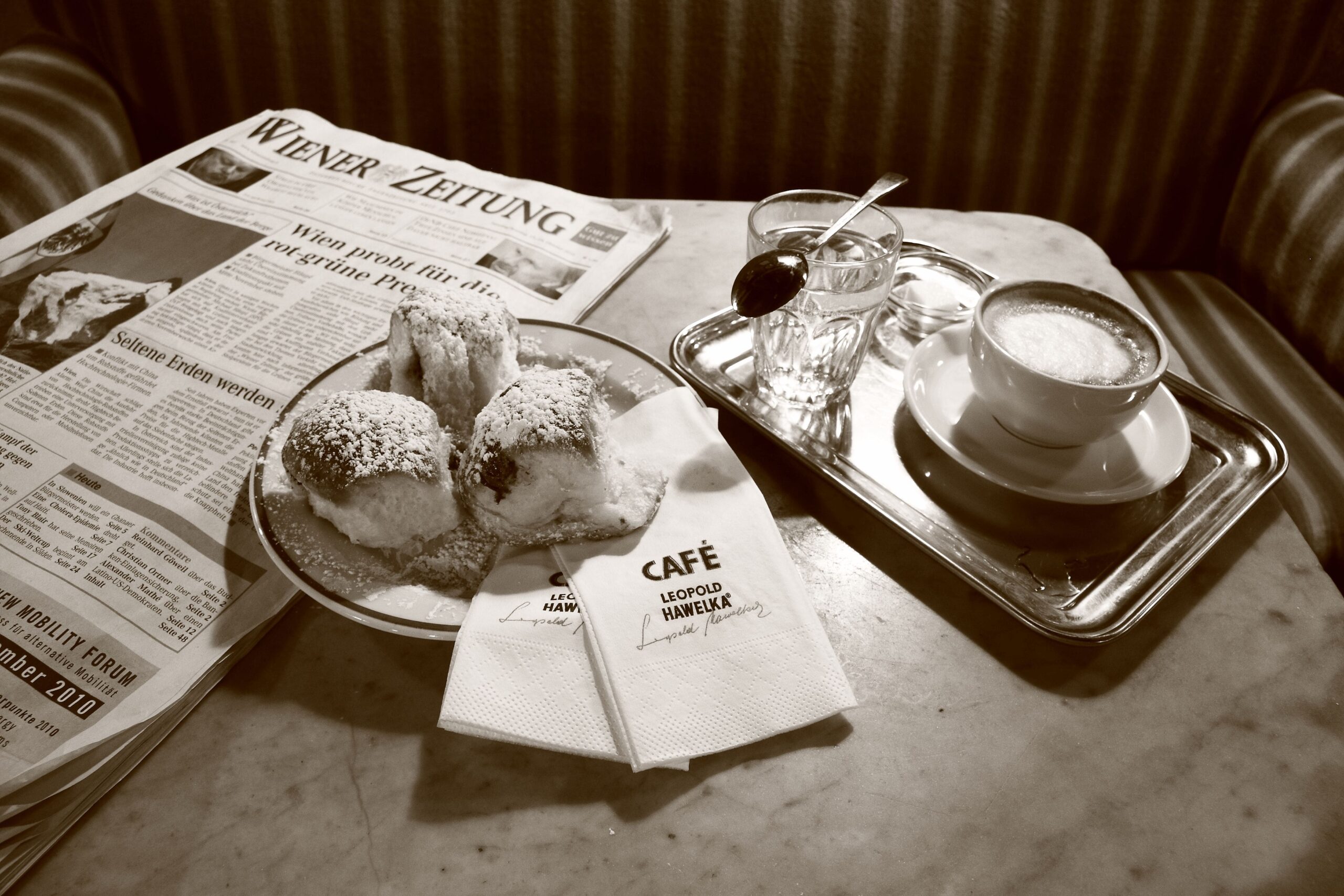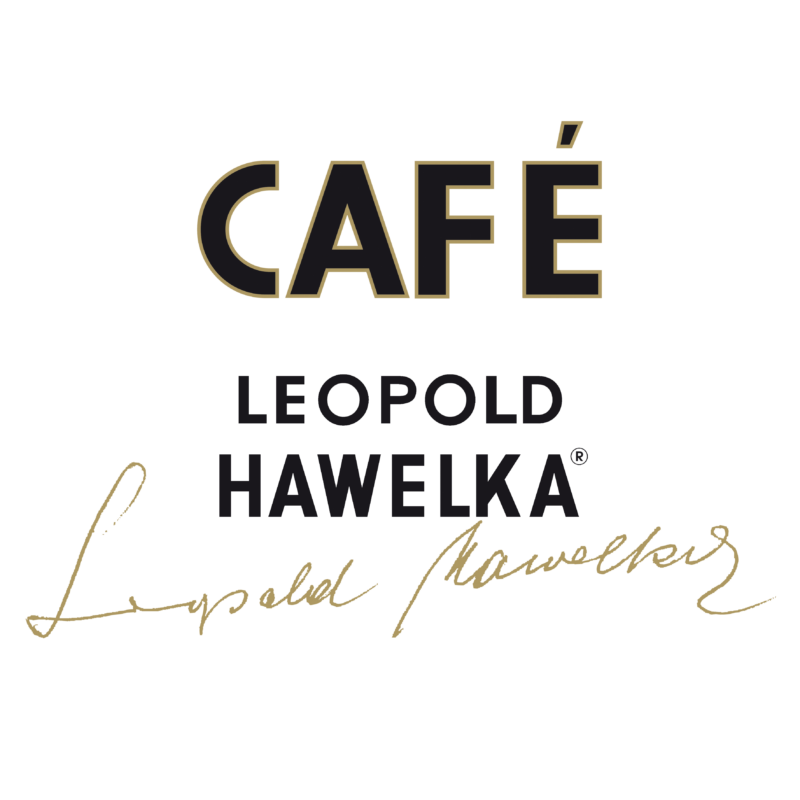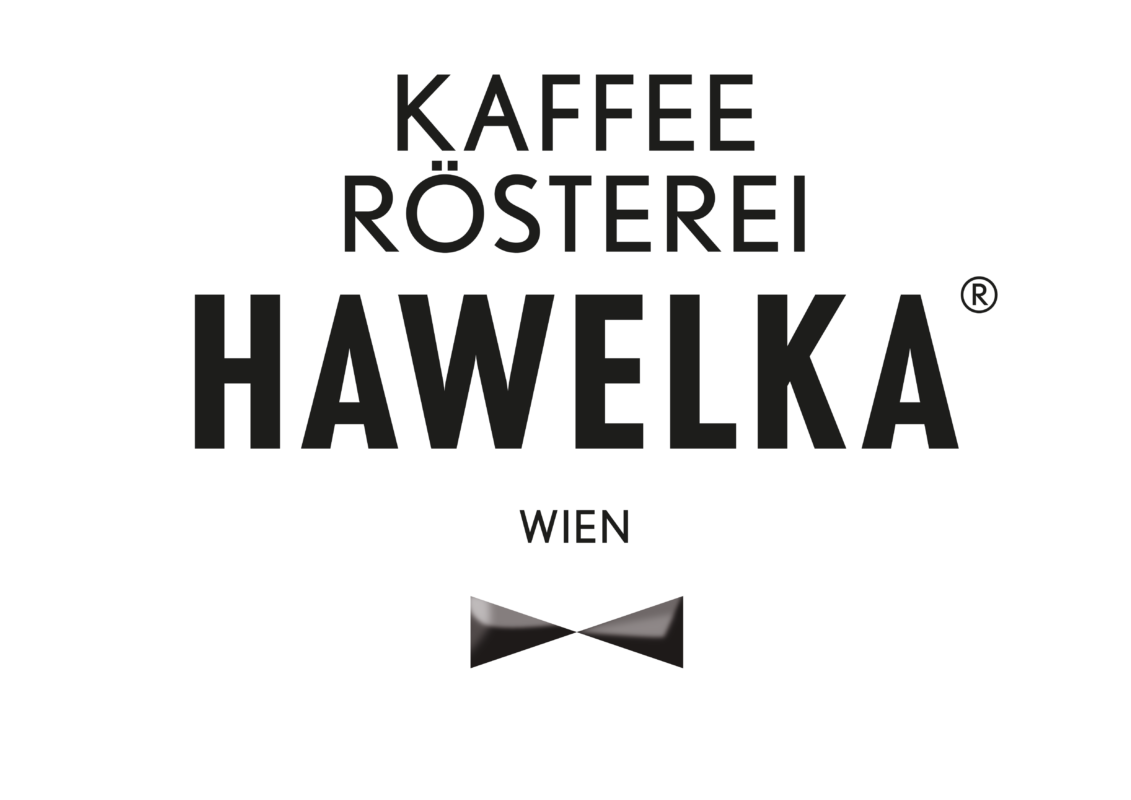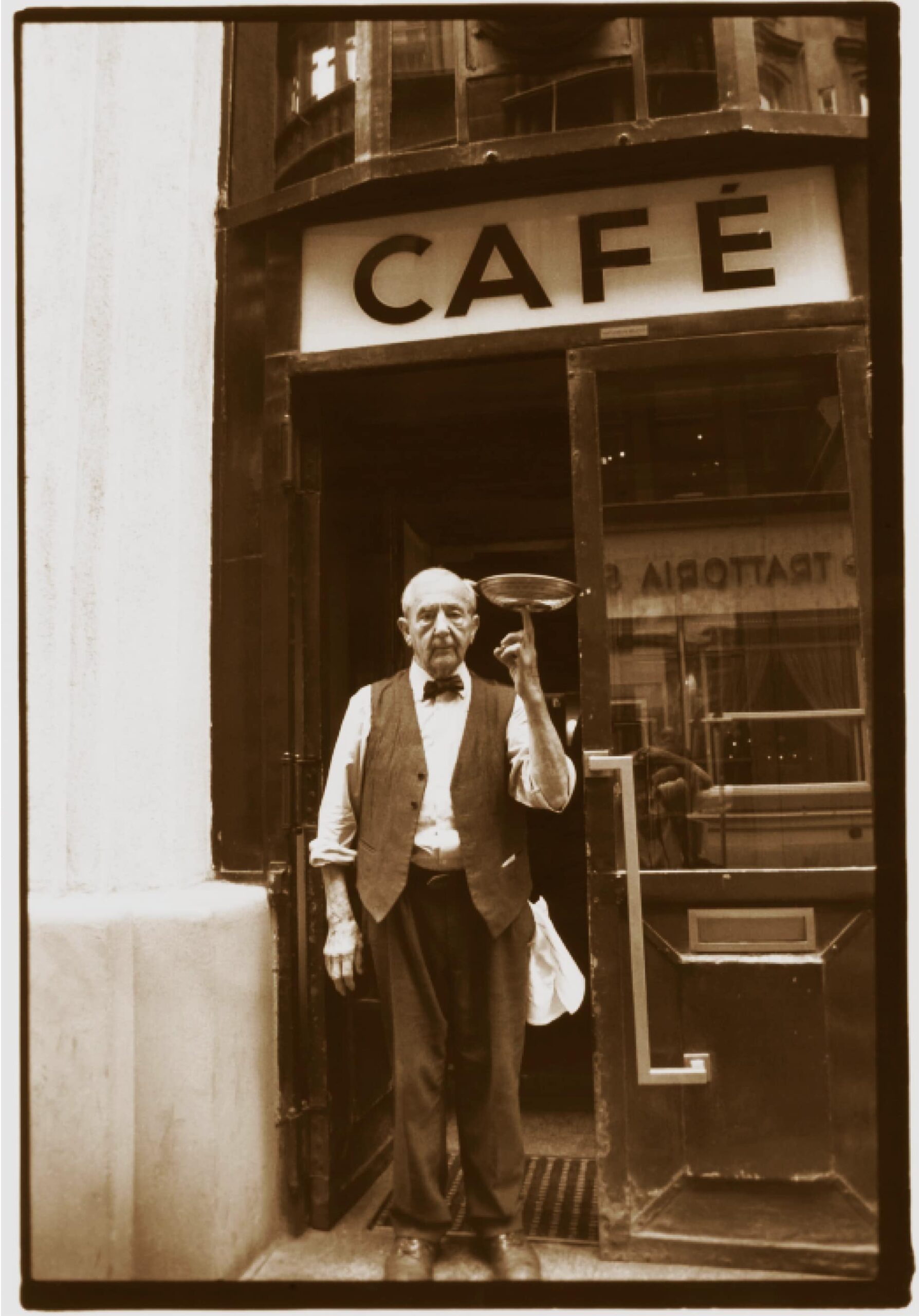
Hawelka is much more than just a place to stop for a coffee. It is part of Vienna’s comprehensive cultural history – combined with wit and charm. The café is still considered an artists’ café in Vienna today – be it because of the numerous writers and artists from the past who have left their mark here, or because of the young intellectuals who like to frequent it time and again. The café has been run by the Hawelka family for three generations now and offers not only an ambience full of history, but also its own roasting plant in Vienna’s 23rd district, where a variety of coffees are produced using traditional drum roasting.
Beginning of the story
Café Hawelka in Vienna’s 1st district is one of the last of the great Central European traditions of literary and artistic coffee houses, such as Café Central in Vienna before the First World War and Café Herrenhof before the Second World War. It is still run by the Hawelka family, just as Leopold Hawelka and his wife Josefine once did 80 years ago when they opened the café.
When it all started together in 1936…
Leopold Hawelka began his long career as a café owner with the Café Alt Wien in Bäckerstraße in 1936. But in May 1939, the Hawelkas decided to take over the run-down Café Karl in Dorotheergasse. These premises were originally opened in 1913 as the “Chatham Bar”, the first “American Bar” in Vienna, with live music and a chambre separée (now a storage room). The elegant interior design, parts of which have survived to this day, was by Rudolf Schindler, a student of Otto Wagner and Adolf Loos, who later also worked in Frank Lloyd Wright’s studio in the USA. The paneled ceiling at the back of the coffee house was only rediscovered and opened by chance by Mr. Hawelka in the sixties.
The history of the coffee house
The outbreak of war in September 1939 forced the new Café Hawelka to close. When the Hawelkas returned to Vienna in 1945, they found that their coffee house had miraculously survived the war without a single broken pane of glass, despite the considerable damage to most of the surrounding buildings. The house was also one of the first to be reconnected to the public supply network. Post-war Vienna was vividly portrayed in Carol Reed’s famous movie “The Third Man”; in fact, the Casanova Bar featured in the movie is next door to the Hawelka. Despite all the shortcomings of the destroyed infrastructure and the dangers of the black market, the Hawelkas were able to acquire the most important supplies and reopen the coffee house in December 1945.
The difficult beginning
The coffee was prepared on a wood stove and when the cold winter came, Mr. Hawelka himself had to take a handcart and collect firewood in the Vienna Woods while Mrs. Hawelka took care of the guests. The coffee house soon became a conveniently located, central meeting place for the inhabitants of an occupied and divided city and for those returning from the war or emigration, it provided the ideal environment to escape from the misery of the times. The warm and peaceful atmosphere of the coffee house proved particularly attractive to writers and intellectuals, for many of whom it soon became a second home.
A coffee house is discovered
After the Allies left Vienna in 1955, Café Hawelka was frequented by writers such as Friedrich Torberg, Heimito von Doderer, Hilde Spiel and Hans Weigel. When Café Herrenhof closed in 1961, most of the remaining members of the influential circle of writers moved to Hawelka and the small coffee house reigned unchallenged as the literary café.
The late fifties and early sixties were not only a time of great literary and artistic activity in Austria, but also of great economic growth. The new Italian-style espresso bars that were opening all over Vienna at the time seemed much better suited to the faster pace of life than the traditional coffee house, and indeed many large coffee houses were closed to make way for banks or car showrooms. Mr. Hawelka’s only concession to modernity was to install an espresso machine (which irritated some patrons with its noise), but the coffee house survived as a timeless space thanks to the loyalty of its regulars.
One wall was covered with posters advertising the latest exhibitions, concerts and readings (an innovation by Mr. Hawelka that has now found favour in most cafés in Austria), while on the other walls grew Mr. Hawelka’s collection of pictures of his more talented guests (always bought at market price!).
The great age of art and literature
During the sixties and seventies, Café Hawelka represented everything that was fresh and energetic in the Viennese art scene. Just like most of the members of Fantastic Realism, regular guests included the poet H.C. Artmann, the writers Gerhard Rühm and Konrad Bayer, the actors Helmut Qualtinger and Oskar Werner, the multimedia artist André Heller, the conductor Nikolaus Harnoncourt, the architect Friedrich Achleitner, the singer Georg Danzer and the photographer Franz Hubmann, who immortalized the coffee house through his pictures over the decades. Celebrities from abroad never failed to visit Café Hawelka when they were in Vienna: Elias Canetti, Henry Miller, Arthur Miller and Andy Warhol, to name but a few. Politicians and journalists flocked to the coffee house to discover the latest trends. The crowds came to see and be seen, and Café Hawelka became an institution, and Mr. and Mrs. Hawelka became as famous as their guests.
Café Hawelka’s reputation extended into the guidebooks and as the enfants terribles of the sixties were accepted into the establishment and took up lecturing positions, their places in the cafés were taken by tourists and those hoping to bask in the limelight of the other celebrities.
While the golden years are probably over, it is the outside world that has changed, not Café Hawelka. It is still a refuge for many artists, writers and musicians.
The third generation of Hawelkas now works in the coffee house. Mr. Günter Hawelka presides during the day, greeting each guest personally, and in the late evening, as on every evening for three quarters of a century, the aroma of Mrs. Hawelka’s legendary Buchteln wafts through the room.





